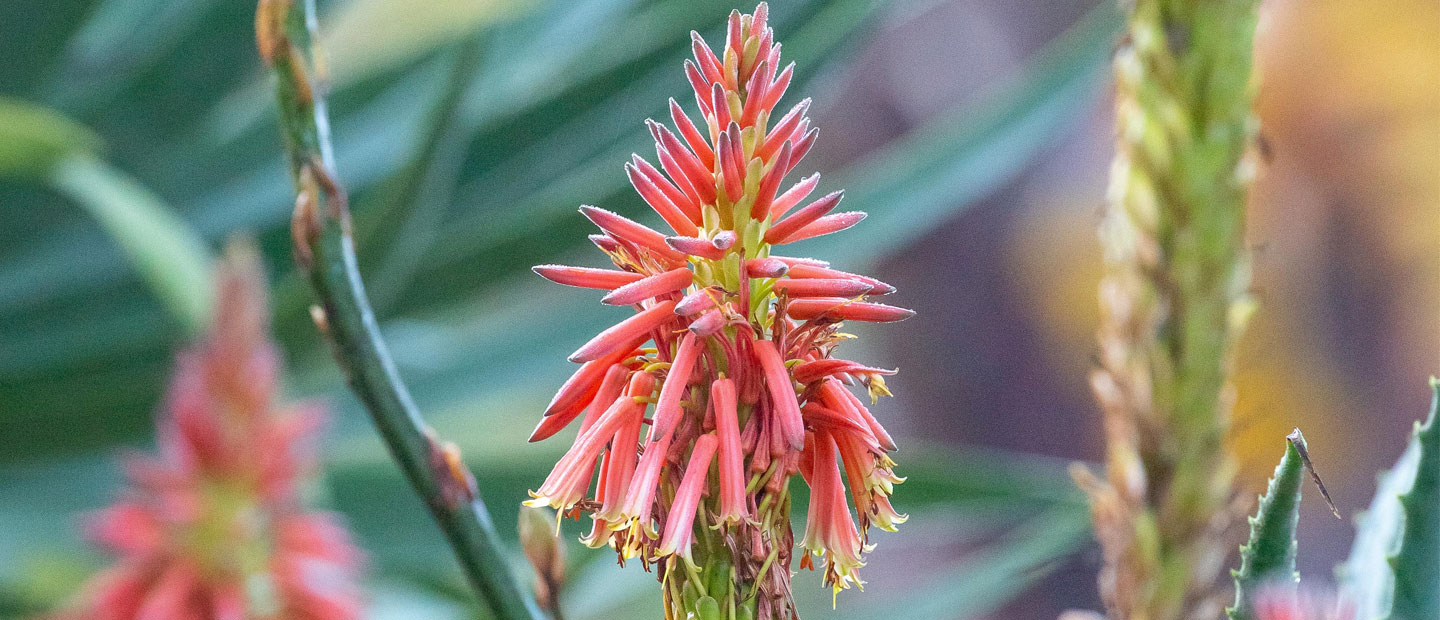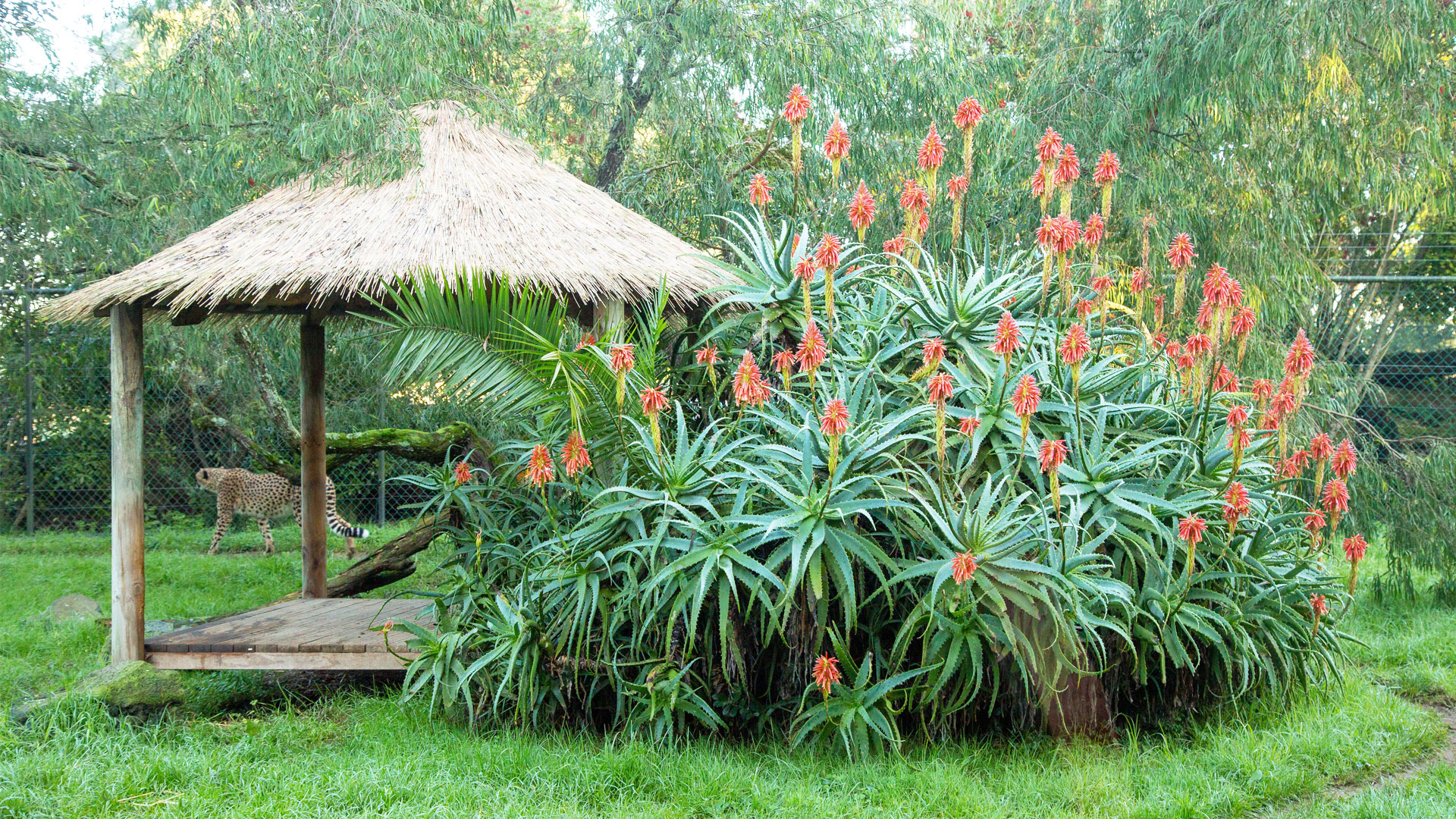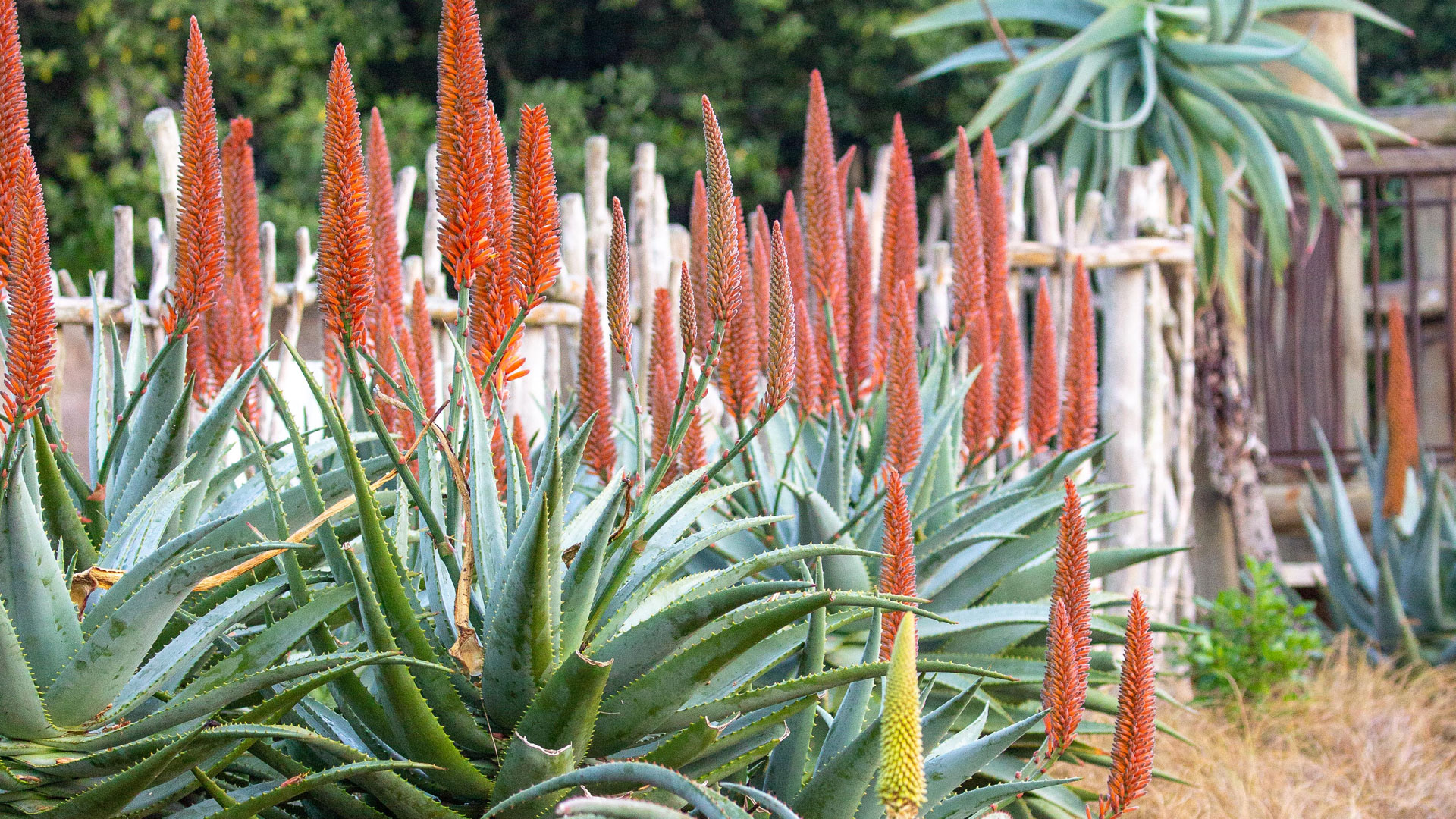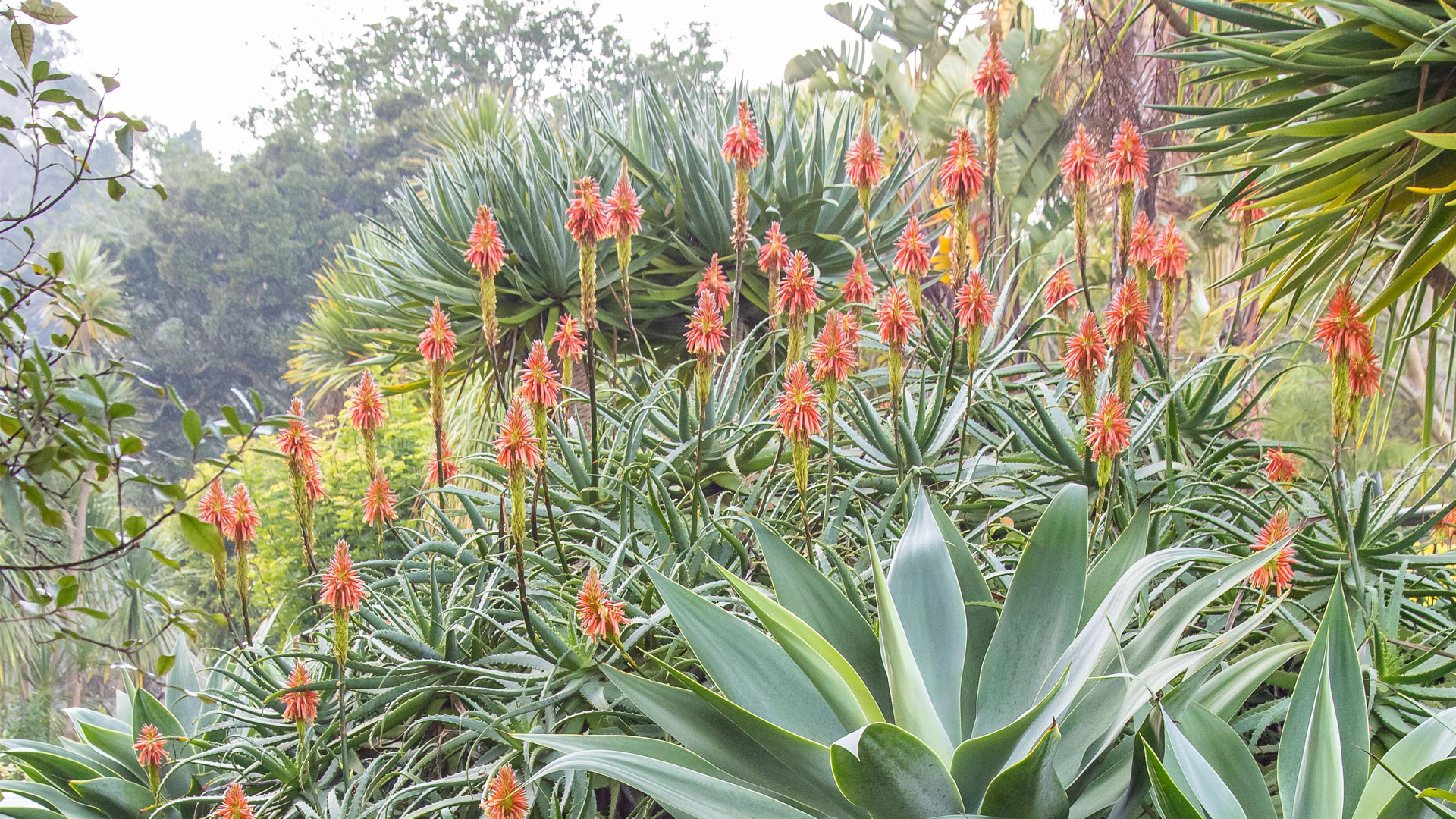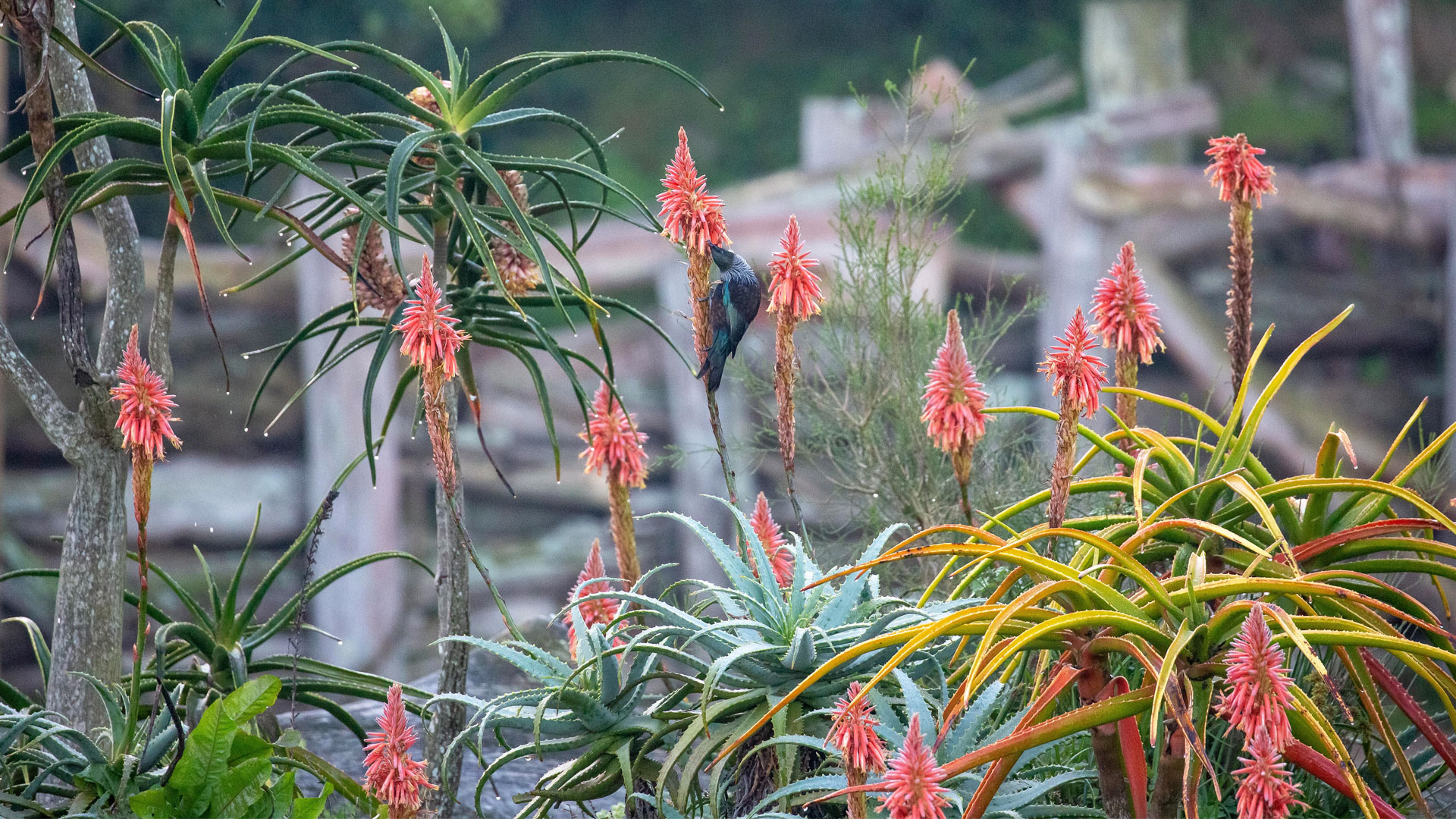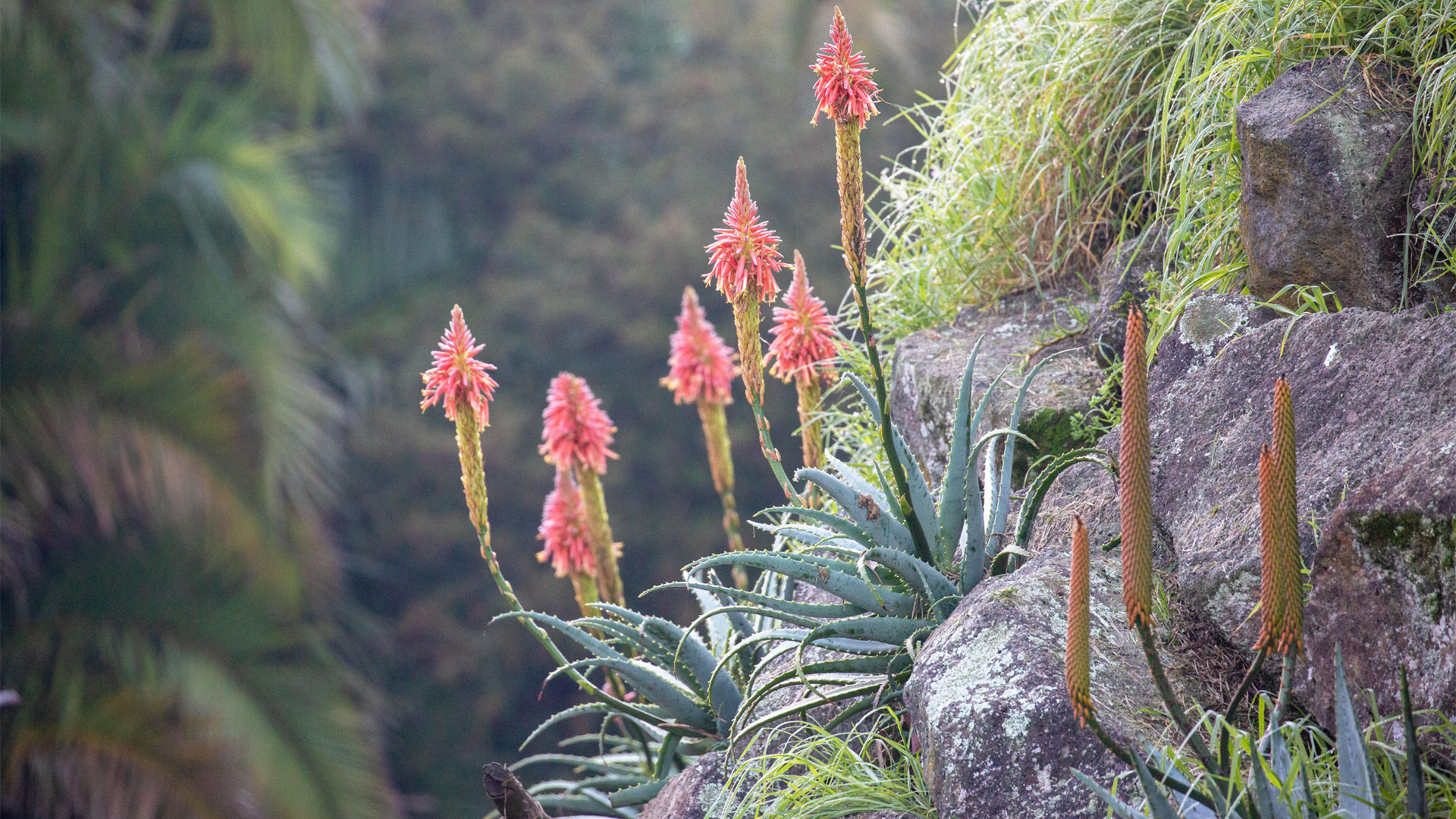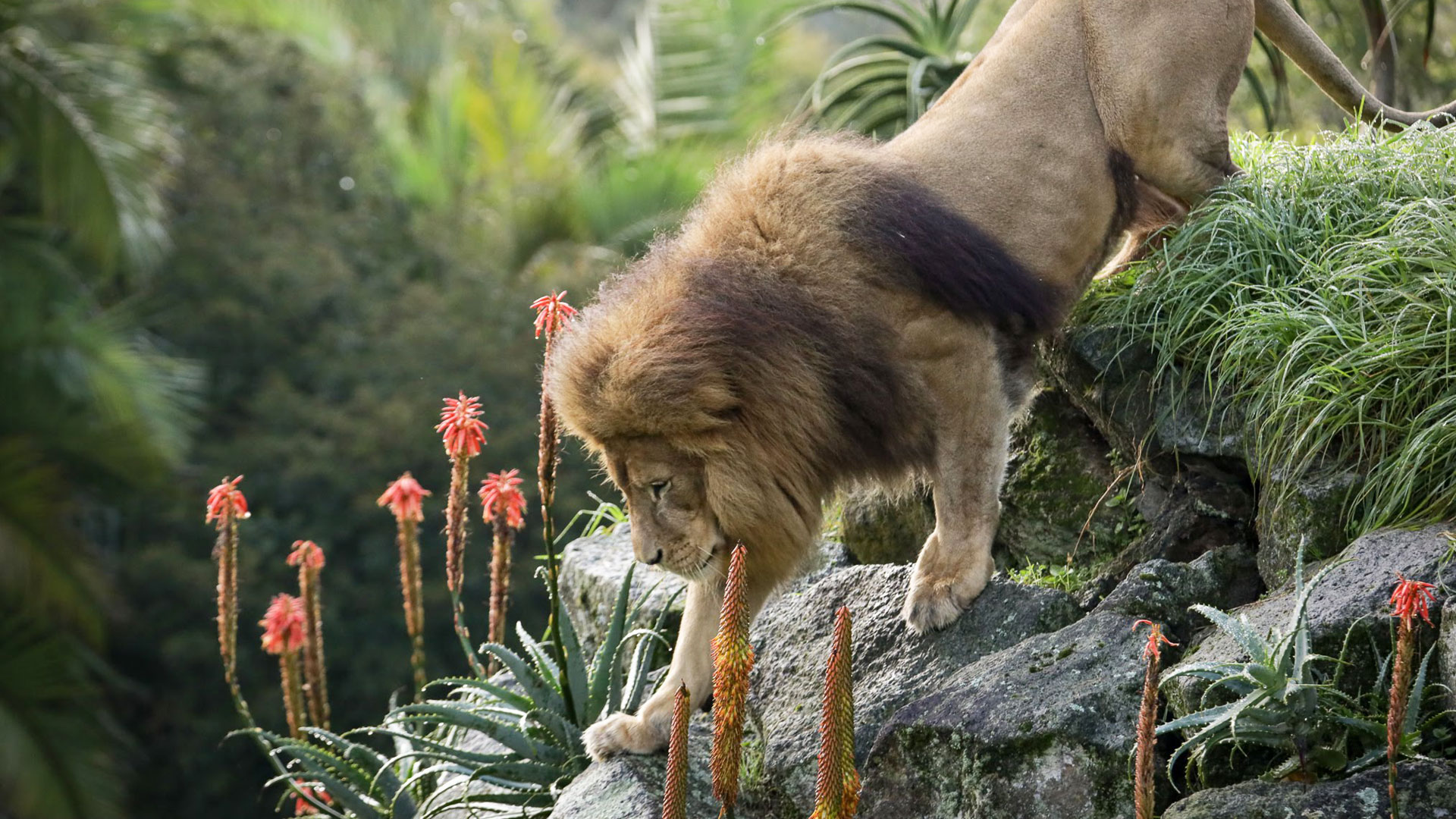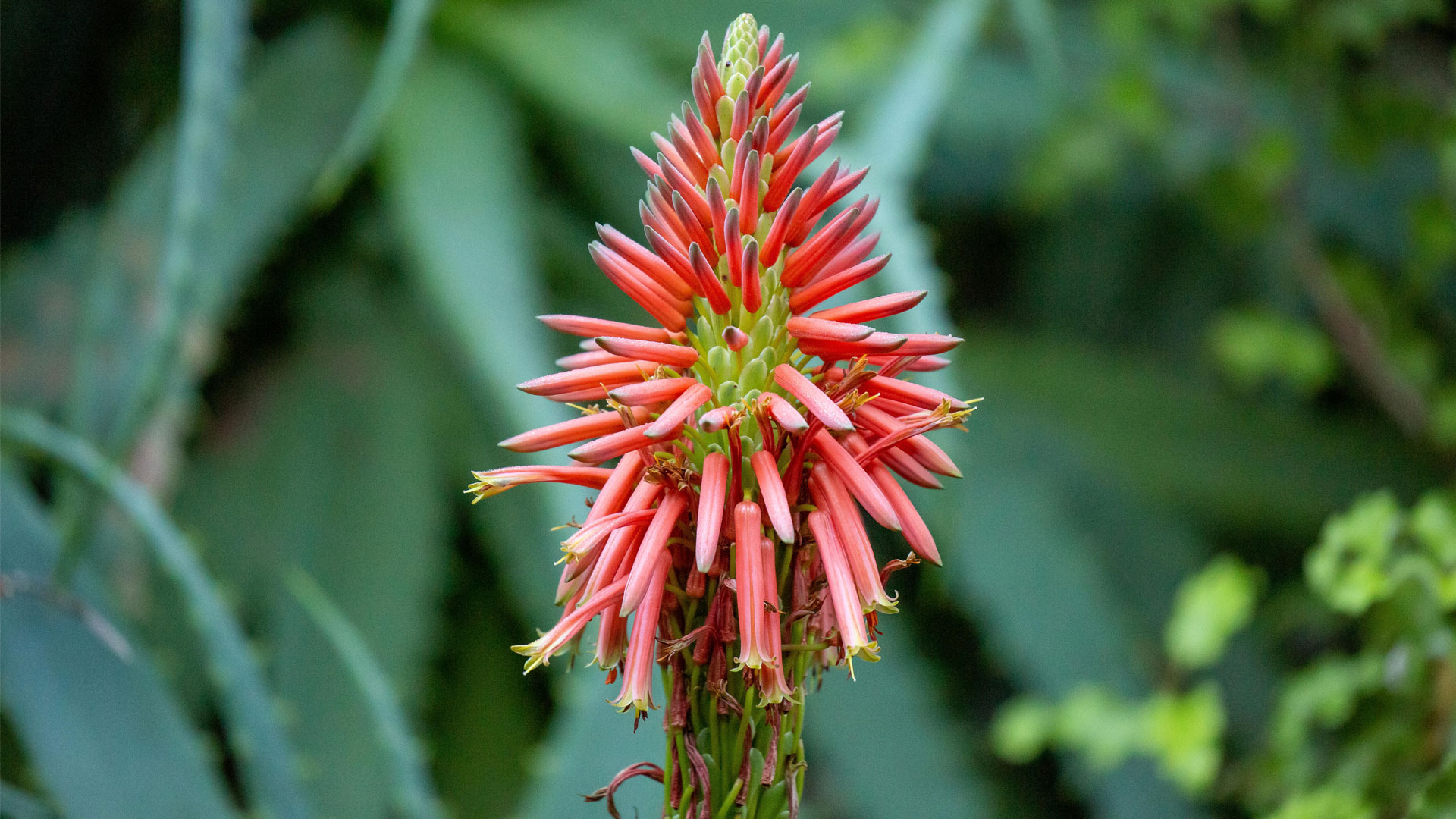At Auckland Zoo, it’s important to us that our wildlife and our visitors are immersed in naturalistic landscapes. One of the ways we do this is by using plants that are native to the wild places and continents that are represented at the zoo. Our horticulture team select and nurture these iconic flora so they can flourish and this is why the majority of our Aloes are found within our African habitats. You’ll see several large groupings of succulents full of vibrant blooms by our giraffes as well as near our African big cats; cheetah, lions and servals. Some of these varieties are; Aloe thraskii, Aloidendron barberae, Kumara plicatilis, Aloe speciose, Aloe arborescens, Aloe alooides.
As you’ll know if you grow these in your home garden, Aloe plants require little maintenance which makes them a popular choice of houseplant. It is easy to grow most Aloes from seed, or they can be propagated from cuttings. Aloes are also attractive for visiting birds and bees as their flowers are a good source of nectar.
Many species are cultivated especially for their pointy-leaves and densely clustered red, burnt orange and yellow flowers that bloom every year. When fertilised, these flowers will form small fruits with tiny papery seeds inside.
Come and view our gorgeous plants while you’re visiting our African wildlife! Most Aloe’s are winter bloomers so now is the perfect time to see them in all their glory. Stay tuned for the next blog in this series and if you have any recommendations on plants we should cover or questions for our horticulture experts, flick us an email!


